- Tools
- Learn
- Help
Before you leave..
Why not download RevGlue latest free eguide.

The evolution of digital content can be characterised as interactive, personalised and innovative. The ever-growing demands for better customer experiences has proliferated how consumers shop nowadays especially in the field of commerce.
If you’re a brand or a publisher simply looking to maximise purchasing opportunities for your customers, then read this guide on everything you need to know about shoppable content in 2021.
What is shoppable content?
Shoppable content is content that makes for a seamless, short purchasing experience by reducing the number of steps that is otherwise felt in a traditional commerce experience. For example, Livestream shopping videos, Instagram shopping tags and reels, blog articles are now embedded with functions that allow consumers to purchase instantly without leaving the page.
Why should you make this a part of digital marketing strategy?
The power of products and services now being displayed creatively in different scenarios and mediums means commerce online has been able to tap into consumers emotions more effectively. Just as we see ambience and aesthetics of retail brick and mortar stores appeal to consumer senses to evoke emotions and influence perceptions. We are now seeing these experiences being translated in the digital world. Whether consumers feel inspired by the status symbols presented online, or looking for products socially online – it is essential to leverage the different shoppable content to facilitate engagement and conversions online. These are the channels that are influencing conversions at a more rapid rate. Experts are saying that worldwide e-commerce will generate over £4.5 trillion in sales in 2022, now that’s a bandwagon you want to jump on.
Now, we can’t move on without mentioning how important it is for brands to personalise the shoppable content to the right target audiences, where they feel the content are relevant to their needs, desires and values. This way, it will automatically build trust between the brand or publisher and the consumer.
Some brands have been at the forefront of this, here we’ll share examples of what brands have been doing as well as best practices that have recently evolved.
What are the shoppable content types?
1. Virtual experience
One of the best retail experiences, where virtual stores use 3D renderings or photos stitched together to allow audiences to walk through aisles and purchase items on display. It is as if you are shopping in the real world. This will only work for brands with existing stores in the offline world.
Ralph Lauren has done a great job at this, where audiences can immerse themselves into this brilliant looking shop and see different rooms or cupboards unfold where people can explore and look at products in detail. All accompanied with product descriptions.
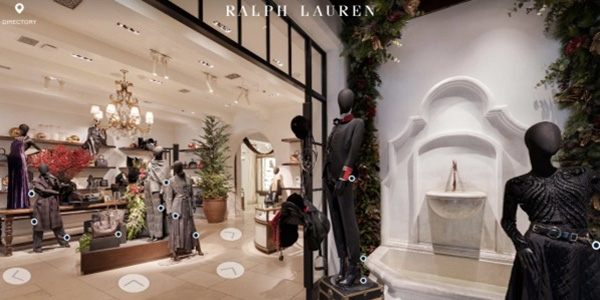
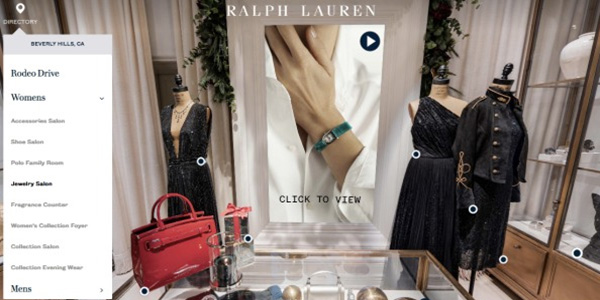
2. Shoppable videos
Videos are the most powerful form of content eliciting emotions and vividly telling stories like no other mediums. Brands are delivering cinematic style videos to entertain as well as show product details in creative ways whilst staying on brand. In fact, brand can be enhanced through form of story telling. These videos contain interactive shoppable pins where users can click or tap on what interests them. One great example is Ted Baker with their impressive campaign, where shopping clickable hotspots were embedded in the video, where audience can open up for more information and buy if interested.
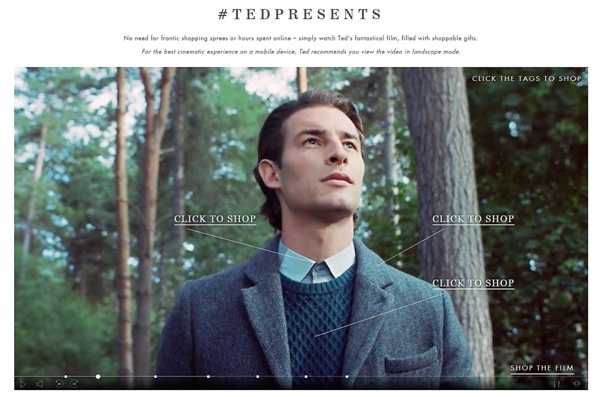
3. Shoppable images
Aesthetics and all its nuances has always been important when formulating or creating product images in an effort to engage and influence purchases. From appealing settings to unique angles, doing it right from start to end of the customer journey is crucial.
As an example see H&M who have embedded shopping icons to their image. Giving people the option to easily click and buy product.
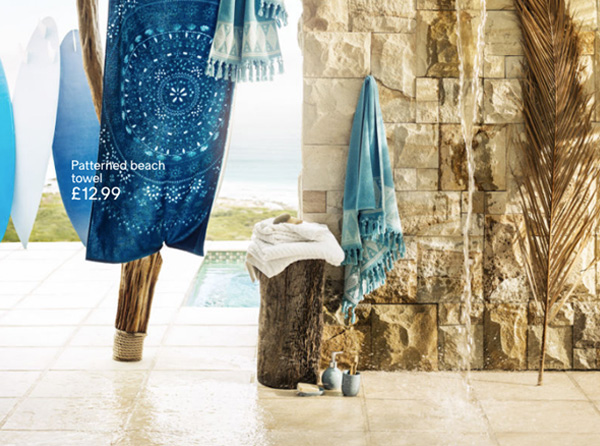
Shoppable tags are highly utilised in social media, from Instagram posts to Pinterest pins.
4. Shoppable image with RevImage
Tools such as RevImage allows publishers to easily create shoppable tags to images, this allows for more instant conversions. It is a free tool, giving access to millions of affiliate products across thousands of brands, simply register, select affiliate products you’re interested in and you could be earning commissions from day one. Plus, a simple hover over the interested products displayed in your images, will reveal some important descriptions about the product before they decide on purchasing.
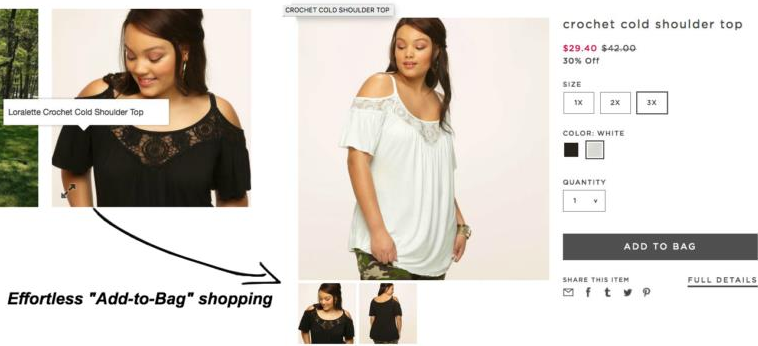
5. Instagram shopping tags
When this technology launched, it was a huge hit. This is a great marketing tactic, where one using their business account can enable the shopping feature. Once it’s ready, you can add your product feeds to Instagram and link to the product/(affiliate product) pages.
This is an example of a beauty brand using a model showcasing a natural cream which compliments her skin tone. The steps involved show how quickly one can purchase a facial cream.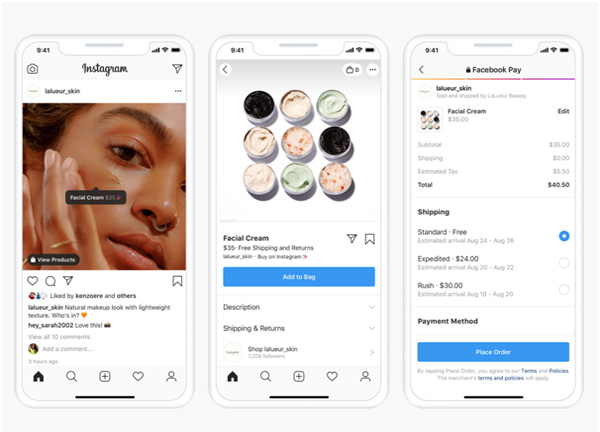
6. Shoppable Pinterest Pins
In the same way, Pinterest allow users to create shoppable tags to their posts. It allows one to add in pricing information, link to the product pages and a strong CTA. Here’s an example of how it looks:
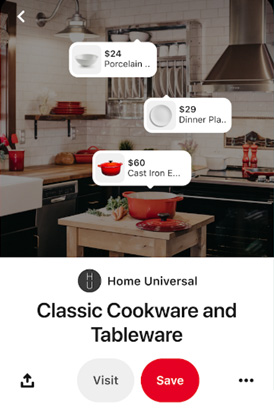
This is a great way to get your brand noticed allowing for easier comparison with similar products from competitors and customers to continue to research and get inspired. To do this, activate your business accounts and enable the shoppable pins.
7. Shoppable text
Today’s content is all about he instant gratification to those who are digesting it. If you really want to give this, embed hyperlinks or pop ups to specific keywords in your article. Whether that be a blog, magazine or a news article, automatically add these links to the keywords with RevLinks technology – a free tool which does the work for you.
In the below example, Grazia magazine adds pop ups to keywords, which displays the most important product details. It does this seamlessly where it minimizes the disruption to those reading the content. This will work in any form of article, whether that’s a lifestyle blog, a step-by-step guide, a review page or solutions for challenges.
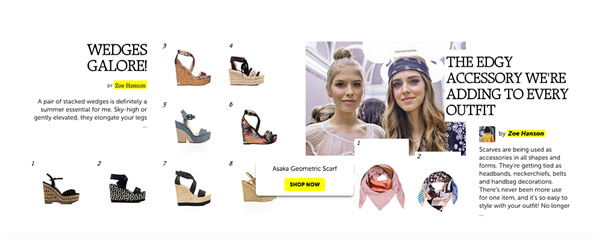
8. Shoppable video ads
If you want to maximise your reach and believe your visuals are strong and can influence purchases, why not invest in video ads? Channels such as YouTube are investing in this technology, allowing businesses and publishers to complement their videos with product imageries and information. The imageries are usually accompanied by the videos and link to product pages. Below is an example of what this looks like.
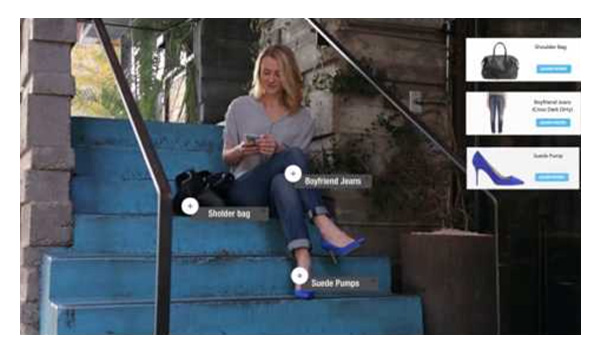
This can easily be done by connecting your Google Merchant Center product feeds with your video ads. This will allow you to simply select the images you want to include in the ad. This is still new, so it is likely majority of your competitors are not using it, so why not get ahead and utilise this feature.
9. Responsive shoppable templates
Whether it’s a coupon site, a price comparison or cashback site, these affiliate pages can increase conversions by adding a strong call to action, and instead of redirecting to a different site, they can do so without leaving the page. Our Wordpress plugins and templates are very easy to use, simply plug in, customise according to your desires and make live. All offerings, data are integrated.
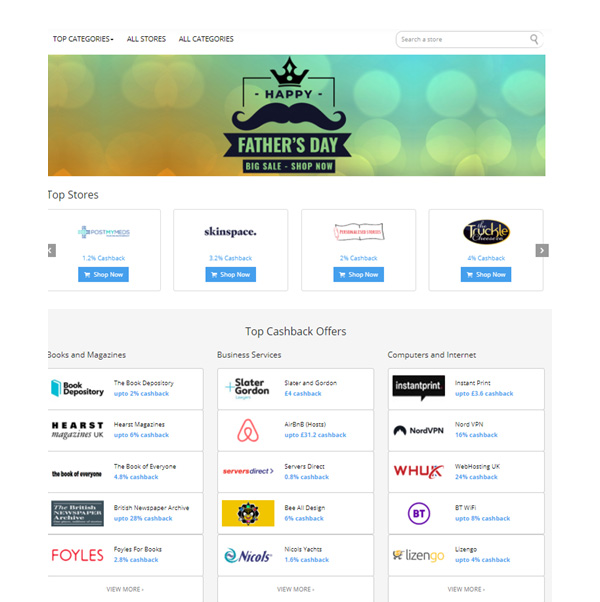
10. User generated shoppable content
Made.com is a great example of a brand which empowers and make the most of User Generated Content. It usually features photographs with beautiful settings showcasing the products with shoppable tags. This not only triggers viewers to make a purchase but also a social proof which develops credibility and trust.
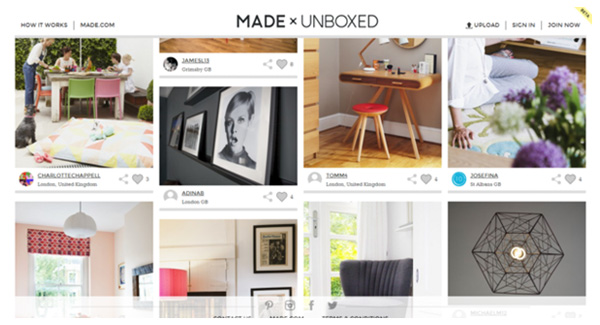
11. Wrap up
From our point of view, shoppable content although it’s a great strategy, is not that easy. It all comes down to a good execution, to help improve the customer experience, whether that’s a seamlessly designed journey, striking, salient visuals, or great targeting strategy. When you know how to do this, you can always optimise the shopping experience through great content and also envision new, unique experiences for your customers.
If you are interested in wanting to know how our tools can assist or create shoppable content, talk to our team today.